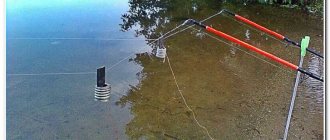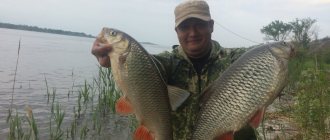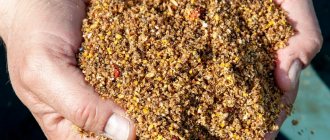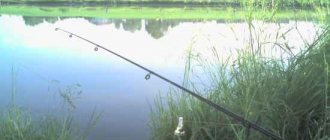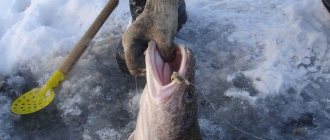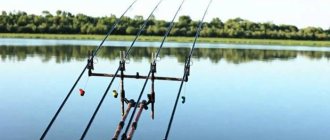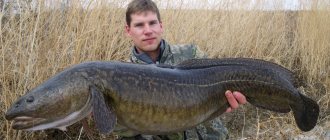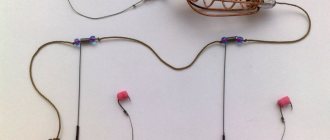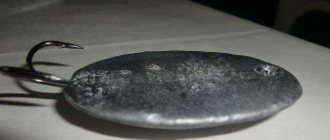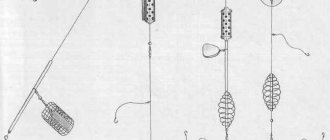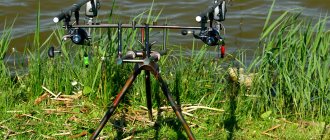Promising places
It’s worth saying right away that ide lives in rivers with fairly large depths and gentle currents. It is also found in large lakes, but only in flowing ones. A clean environment is one of the main conditions without which this fish simply cannot survive. The water may even be a little salty, but not cloudy or dirty.
Most of the time, ide prefers to stay at depth. Periodically, it goes out into shallow areas of the reservoir to search for food. You can catch it at shallow depths in the spring, during the post-spawning period. In summer, it can rise to the upper horizons and collect fallen insects from the surface, but after feeding it always returns to the depths. It should also be caught there in the fall.
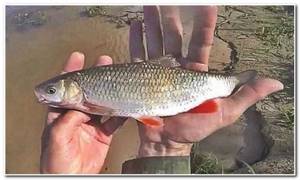
Where are the ide sites located?
First of all, experienced fishermen advise paying attention to the following areas:
- deep places with little current, located below the rifts;
- silted and clayey river zones;
- whirlpools and whirlpools near washed-out shores;
- depths near the supports of hydraulic structures.
It is in such areas that you need to look for ide. Here, in one fishing trip you can “raise” more than a dozen heads, but you should know that only young animals lead a school lifestyle, while large individuals usually stay apart, alone.
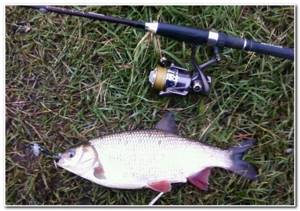
Bait and groundbait for ide
The most catchy baits for ide, as practice has repeatedly proven, are dung worms and maggots, sometimes caddis fly larvae; ide is also caught with a beetle. In addition, for some reason many fishermen neglect bait when fishing with a half-bottom, which they do absolutely recklessly!
Undoubtedly, bait will not keep the fish in one place, but it will activate the bite of newly arrived ides! However, it should be remembered here that you need to feed when a fish’s parking place or its hunting trail is discovered! Preparing the bait itself is as easy as shelling pears - roll chopped worms or any cereal along with clay into balls with a diameter of, say, an orange and throw them a little higher than the place where the baited hook will be located.
Design of the ulcer donk
Rod
For catching ide on a bottom from the shore, a medium-hard feeder rod with a tip that is soft enough to transmit careful bites is suitable. This is how this fish most often bites. You should not use a rod that is too long, as it has less sensitivity, which in turn leads to late hooks and frequent derailments. The recommended length is 2.4 meters, this is the best option for precise casting at a wide range of distances.
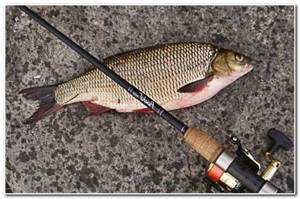
Coil
The requirements for the reel are extremely simple. It must have high strength characteristics, since ide is capable of providing serious resistance. Another point is high-quality, uniform laying of the fishing line. If you choose the right rod and reel for it, the tackle will be light and easy to use.
fishing line
To catch ide on the bottom, fishermen use strong fishing lines, both monofilament and braided. The choice between them depends on the expected casting distance. For short and medium distances (no more than 60-70 m), monofilament is better suited, and for casting to holes located far from the shore, it is more advisable to use a braided cord.
What to catch ide with
Due to the omnivorous nature of the fish, the equipment for catching ide is characterized by an enviable variety and absolutely any fishing method is suitable for catching it. The fisherman has the right to choose a strategy for hunting for a trophy based on the principle of catching predatory fish, or he can work out the option of organizing ambush fishing in the direction of catching many carp species of fish. We will describe the most famous fishing methods in the continuation of our article.
Catching ide with a spinning rod
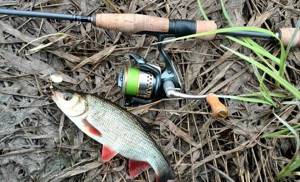
Ide is caught everywhere on a spinning rod, and this method becomes especially productive in the fall, when the fish switches to a purely animal diet. For spinning fishing, use light or ultralight combined-action tackle, equipped with a 2500 inertia-free reel with a high gear ratio. Braids with a diameter of 0.10-0.12 mm are used as the main cord. A leash is not used in ulcer fishing, and they try to connect the bait through a miniature carabiner with the same small swivel. Fishing for ide on a spinning rod is carried out with both surface and deep-sea baits. Under certain fishing conditions, even dead fish can be used as bait, for which bleak and small loach are well suited.
Float rod
It is convenient to fish with fly tackle from a boat above a promising point, but fishing from shorelines at long distances using Bolognese or match tackle is more effective. A lapdog is taken six meters long, equipped with a monofilament line no thicker than 0.2 mm and mounted with a sensitive spindle-shaped sliding float weighing no more than three grams. Sinkers in the form of pellets are carried along the fishing line, making the equipment more delicate. Be sure to use a leash with a thin line. The length of the leash is taken in the range from 20 to 30 cm, focusing on the choice of size based on the activity of the fish. Hooks are set according to the size of the bait, trying to incorporate dark colors in a design with a shortened shank. The tackle for ide should be rigid, which allows you to clearly make a hook even with the slightest movements of the float indicating a bite. Float fishing occurs in the spring and throughout the summer.
Fly fishing
Fly fishing is quite an interesting direction in idean fishing, but its popularity and distribution are not as wide as chub fishing, although they are quite similar in fishing techniques and strategies. For the most part, fly fishing is effective at the moment the mayfly emerges, when the ides rise to the surface of the reservoir to collect food. The period of flight of the cockchafer from mid-May to the end of the first ten days of June is famous for its stable bite and large catches in terms of the number of specimens. Fishing is carried out in a wade using a 2.5 meter long fly rod using a floating cord. They fish in water areas under the crowns of trees, and also fish in quiet backwaters, close to the main currents, pulling the bait from fast water to a calm section of the river.
Bottom fishing rod

Bottom fishing can be planned during the entire open water season. The most productive fishing is with hooks and feeder gear, although the use of a classic line donkey or elastic donkey on vast and deep plateaus also brings significant results in terms of trophy production. Any type of bait can serve as bait for ide, be it plant and inert animal baits or live bait from small, runaway fish that live in the fished reservoir. A promising bait is considered to be a small frog, attached to a single hook by the thigh.
They fish long distances with donks, installing leashes measuring 40–70 cm. A braided cord no thicker than 0.15 mm is always used as the main cord to clearly transmit the bite. In feeder ulcer fishing, an asymmetrical loop rig is common, which transmits weak bites much more clearly when fishing in currents and does not alarm fish interested in the bait so much.
On the jig
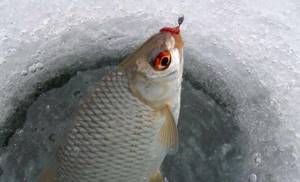
The jig is used during the freeze-up period, when fish are searched for and caught in wintering pits. For fishing at depths, heavy, elongated, silver-colored jigs with hooks and a short fore-end are used. Tungsten jigs are miniature and heavy, reaching the bottom much faster than other materials, and their play is stable even in currents. When predator activity is low, it is recommended to attach a panicle of bloodworms to unattached types of jigs, thus hoping not only to attract fish to the game, but also to reach the place where the ide is caught using its sense of smell, which is sensitive to animal food.
Fishing in the wire
It is practical to fish with fishing gear based on a Bolognese fishing rod equipped with an inertial reel. The fishing technique is based on placing bait in a certain water horizon along a planned promising trajectory. To increase the efficiency of fishing, use ide bait, fed downstream along the trajectory of the installation. The trail of turbidity will attract a flock to the fishing zone, thereby leading the predator to the passing bait. The reel is equipped with a 0.18-0.20 mm monofilament line and a sticker float with a high antenna. The installation is let downstream at 30–50 meters, in the absence of bites, changing the level of the deep horizon of the wiring.
Equipment
Standard equipment consists of a sinker weighing from 30 to 100 g (depending on the strength of the current), a leash and a hook. The load can be either sliding or mounted on a separate leash. Some craftsmen complement the equipment of the donkey with a spiral-shaped spring feeder and fill it with mixtures intended for catching peaceful fish. It is also possible to use classic feeder equipment.
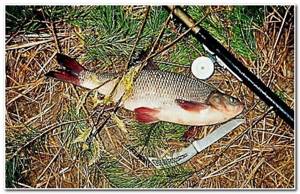
Tackle for catching ide
As a matter of fact, the half-bottom is a kind of symbiosis of an ordinary fly fishing rod and a donka, known from time immemorial. It is enough to do a simple action - move the float to a distance of 30 cm from the tip of the fishing rod and that’s it, the tackle is ready! And yet, there are some nuances that should be discussed in more detail.
We also recommend reading:
Ide fish, its difference from chub and where it lives Features of catching ide in the spring Overhead hooks for fishing: description, classification, reviews Catching pike perch in the fall
Groundbait and lures
When catching ide on a donk with a feeder, the composition of the bait mixture plays an important role. The fact is that this picky fish sometimes ignores everything that is offered to it (or simply does not see it), but as soon as a source of a strong odor appears next to the nozzle, it immediately approaches and starts pecking. That is why the bait for such fishing should be simple, but very fragrant. As a base, you can take cake or pea porridge, then add a little steamed grain and crackers to it, and the last component will be soil (preferably from the same reservoir). That's all, the bait is ready, you can fill the feeder or make balls and throw them at the fishing point.
The bait for catching ide on the bottom is traditionally worms, insects and larvae. Sometimes this fish takes well on boiled corn and peas, but this bait has one significant drawback. When casting, especially over a long distance, when a strong sharp stroke is required, it can easily fly off the hook. Although if you are too zealous, the same fate awaits the cockchafer or grasshopper.
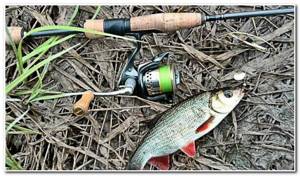
Types of donks
The main principle of a big catch is the correct assembly of the equipment, the presence of an adequate sinker, timely complementary feeding and competent actions during the fishing process.
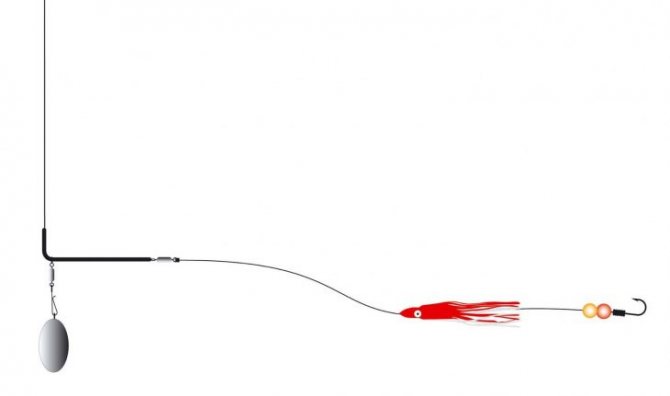
At the moment there is a large variation of donks:
- The classic version using a spring.
- Universal snacks.
- Installation with rubber band.
- Predator killers.
- Feeder type.
- Makushatniki.
- Onboard rigs using a ring.
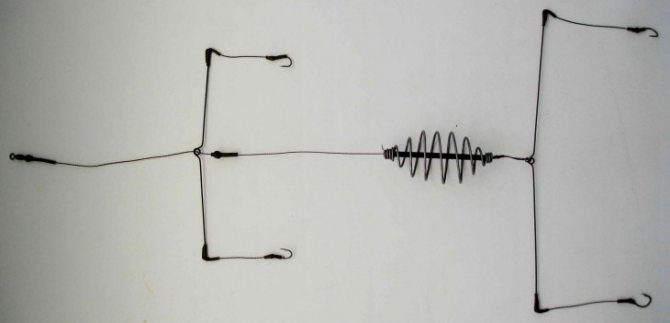
Read here Cuts for wobblers and spinners - how to make a simple homemade cut. 110 photos and videos of practical tips
«>
The types of bottom gear vary depending on the type and depth of the reservoir. If fishing occurs in a fast current, then it is necessary to use heavy weights so that the current does not wash them away along with the hook.
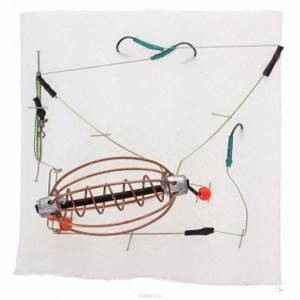
If the water in the river is predominantly of a stagnant type, then the weight and equipment should be chosen small; the tackle will respond better to the bite.
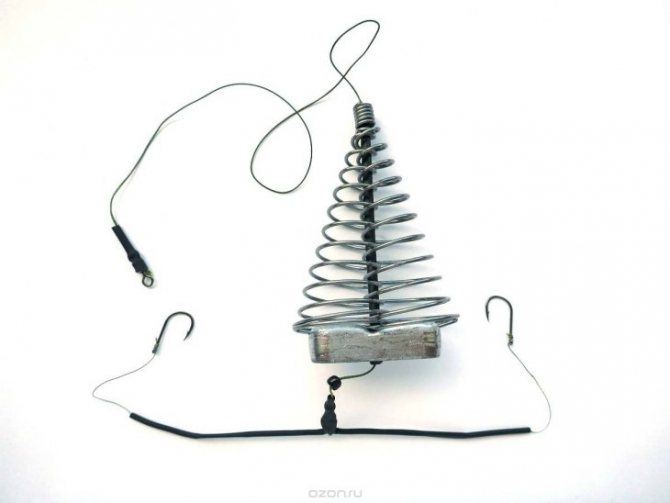
By variety, bottom gear is divided into types:
- The rubber band is used at shallow depths. The rigging of a donkey with an elastic band for standing water is 3-3.5 mm, for small currents - 4, and for rivers with strong currents 6 mm;
- Makushatnik - a cake is built into a lead plate, the ends of which are hidden in the crown;
- Nipple - make a feeder with a lid using lead with the addition of glass containers for prepared bait;
- Ring - made by hand from steel, shaped into a ring shape with a narrow base for fastening;
- Eggs - a thread of fishing line is threaded into the hole, and a fishing line is laid through the lead balls.
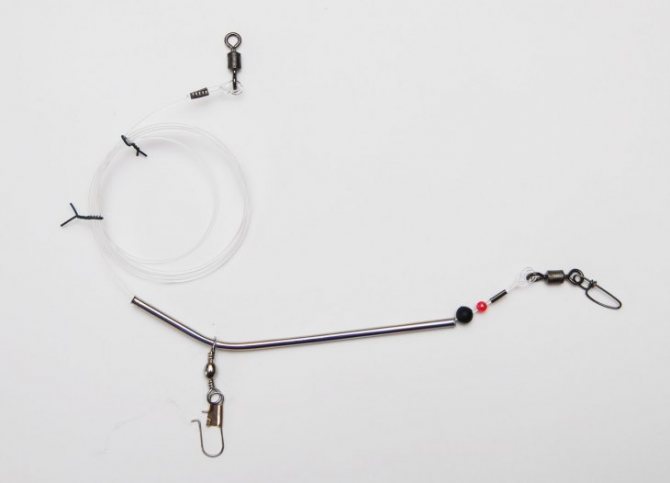
Rigging a donkey for fishing from the shore is done in 2 ways:
- With a fishing rod. Install stands and loosen the friction brake of the reel, prepare any object or device that will signal a bite;
- Without a rod. Fishermen mainly drive in strong branches for convenience.

Technique for catching ide on a donk from the shore
The tackle is thrown at a certain angle against the current. When the load “catches” the bottom, you need to select an excess of fishing line, that is, tighten it, and place the rod on the stand so that its tip is directed to the fishing point. This is necessary so that the fish that bites does not immediately feel resistance and can swallow the bait well. After this, bait is thrown into the fishing area. Sometimes anglers, a day or two before fishing, lay a bulk bait in the selected area in order to accustom the ide to the point. True, it can attract quite a few other river inhabitants, then the catch will be dominated by different fish, and ide, at best, will be a bycatch.
The ulcer bite is expressed in a barely noticeable tilt of the tip, so you need to carefully monitor it. If you are late with hooking, the fish will spit out the “heavy” bait and, most likely, will not approach it again.
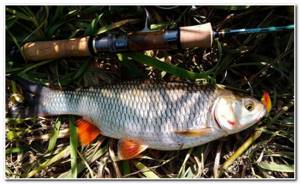
When fishing, the ide vigorously resists, trying to pull the equipment to depth. When you manage to bring it to the surface, it hits the water with its tail and creates a lot of noise. After such a struggle, his relatives will not soon decide to bite, so you should be patient and wait. Sometimes it takes quite a long time between bites, but the wait is worth it, because ide is a wonderful trophy.
Ide for float tackle
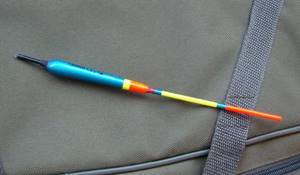
Another way to catch ide, and not only it, is with a fly rod. Using a fly rod you can search for fish. With the help of sliding floats you can make long casts. If the ide is not in its usual places, near areas overgrown with aquatic vegetation and reeds, then a fly rod will be the only way to “get it.”
You can fish with a fly rod, fish with a wire, use sliding tackle, and bait can also be used. But the bait is added in portions and sent to the fishing point from pre-prepared balls of bait mass.
